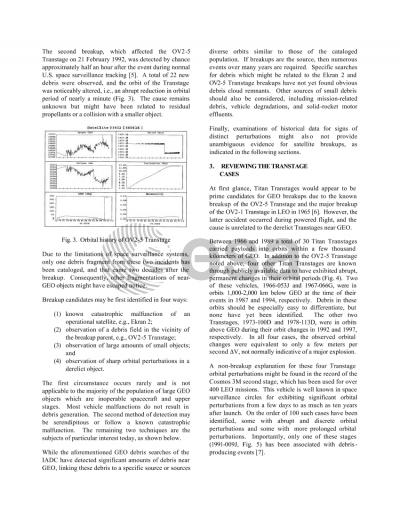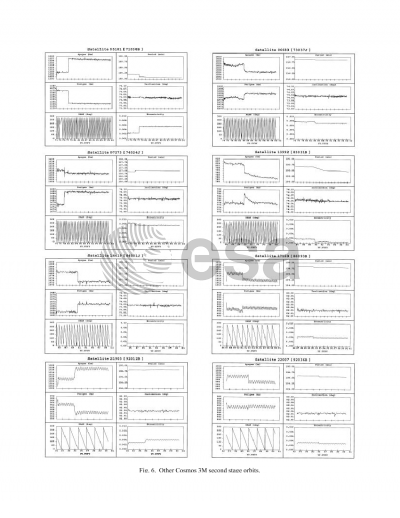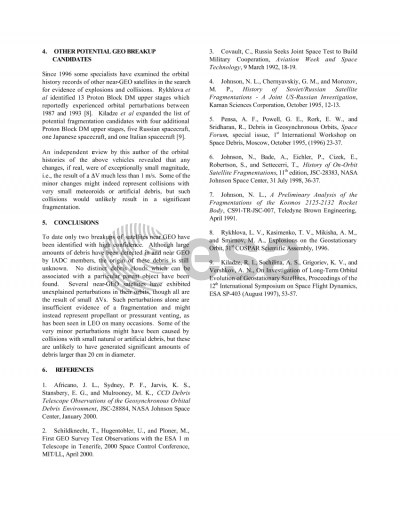Document details

Abstract
Satellite fragmentations are well known to be the principal source of debris larger than 1 cm in low Earth orbit (LEO). Since 1963, over 500 missions have placed more than 830 spacecraft and upper stages in or near the geosynchronous (GEO) regime. If the historical non-GEO breakup rate for other than deliberate or aerodynamic causes is applied to GEO, then as many as 15 breakups might be expected near GEO. Some space surveillance specialists have interpreted specific GEO satellite orbital perturbations as evidence for collisions or explosions for up to two dozen GEO satellites. Moreover, recent searches for small (20-100 cm diameter) objects near GEO have been undertaken in the US and Europe, and preliminary results suggest a significant small debris population. However, to date only two GEO regime breakups have been identified with confidence. This paper summarizes a study of potential indicators of GEO satellite breakups and a review of the two known GEO breakups and of satellites which have been the subject of breakup speculation. Recent GEO debris observations have not revealed obvious breakup clouds which would support these hypotheses. Although some of the detected debris may be of breakup origin, some debris might well have originated from non-fragmentation sources. A LEO non-fragmentation analog might explain some of the observed orbital perturbations in GEO.
Preview






